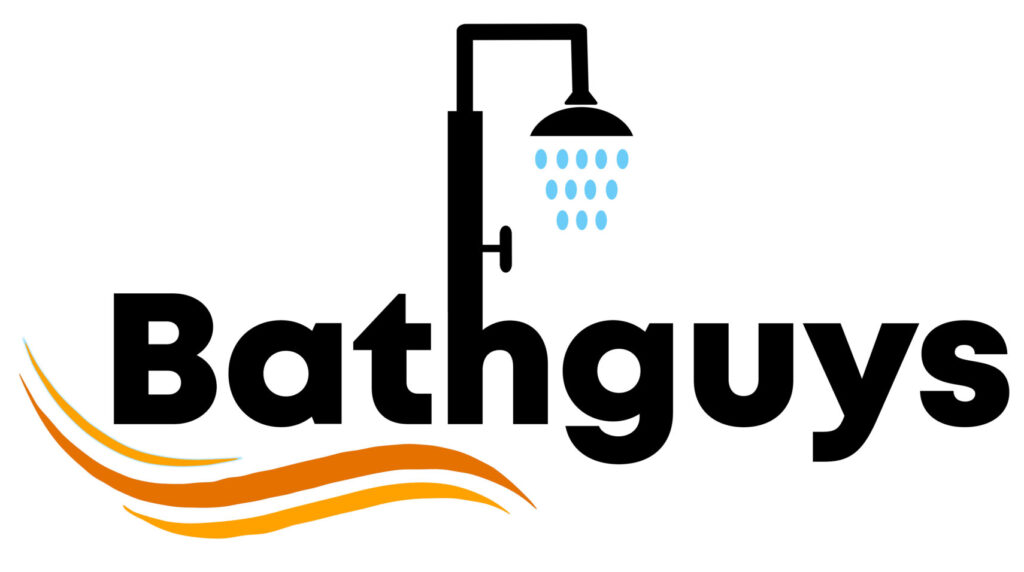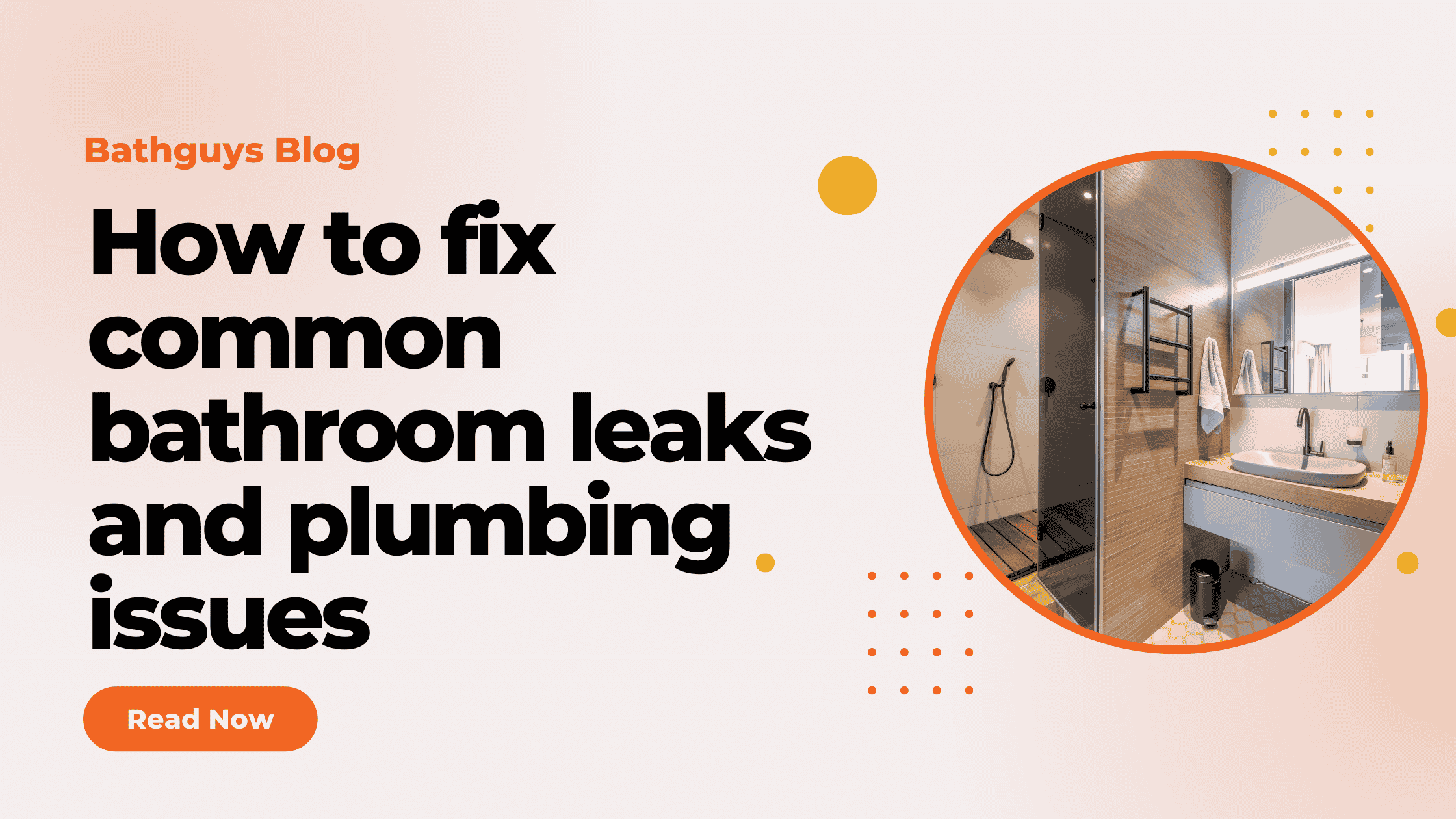How to Fix Common Bathroom Leaks and Plumbing Issues
A leaky bathroom is frustrating, with water damage, higher bills and mold growth. Whether it’s a dripping faucet, a running toilet or a hidden pipe leak these plumbing issues can turn into bigger problems if ignored. But don’t worry—fixing common bathroom leaks and plumbing issues doesn’t have to be a professional job. With the right knowledge and a few simple tools you can fix many of these yourself.
In this post we’ll go through the most common bathroom plumbing issues and show you how to fix them step by step. From detecting hidden leaks to fixing faulty faucets and clogged drains this post will give you the skills to keep your bathroom fully functioning. Let’s get started and learn how to prevent costly repairs and keep your bathroom in tip top shape!
Table of Contents
Understanding Bathroom Leaks
1. Identifying Common Bathroom Leaks
Bathroom Leaks are often over looked till they cause serious damage. Identifying these Leaks early can prevent costly repairs, structural issues and mold growth. Below are the most common types of Leaks found in Bathroom and how to spot them.
1.1 Bathroom Leaks Signs
Before you fix a Leak you need to identify it. Here are the common indicators:
- Unexplained Water Puddles – Water accumulating near sinks, tubs or toilets without an obvious source may indicate a hidden Leak.
- Damp or Discolored Walls and Ceilings – Water stains, bubbling paint or peeling wallpaper can signal a slow Leak inside walls.
- Mold and Mildew Growth – Persistent dampness encourages mold, often found around baseboards, tiles and under sinks.
- Musty Odors – A lingering damp smell suggests hidden moisture buildup, usually from an unseen Leak.
- Higher Water Bills – Sudden increase in water usage without any change in household habits may mean a hidden plumbing Leak.
1.2 Common Areas to Check
Leaks can occur in any part of the Bathroom. Below are the most common areas to inspect:
1.2.1 Leaky Faucets
- Worn out washers or O-rings often cause continuous dripping.
- Loose or corroded valve seats can cause water seepage.
1.2.2 Toilet Leaks
- Faulty flapper valve can cause a running toilet, resulting in water wastage.
- Cracked tank or loose connections at the base may result in visible Leaks.
1.2.3 Shower and Bathtub Leaks
- Worn out caulking around the tub or shower can allow water to seep into walls.
- Leaking showerhead or faulty diverter valve can cause constant dripping.
1.2.4 Under-Sink Pipe Leaks
- Loose pipe joints or deteriorated seals can cause water to accumulate under the vanity.
- Slow drips may go unnoticed till significant damage occurs.
1.2.5 Hidden Pipe Leaks
- Leaks behind walls or under floors may not be visible but can cause structural damage over time.
- Unusual sounds like dripping or hissing behind walls may indicate a hidden plumbing issue.
2. Fixing Leaky Faucets
A leaky faucet is one of the most common bathroom plumbing issues. Even a slow drip can waste gallons of water over time, increasing utility bills and leading to potential water damage. Fortunately, fixing a dripping faucet is a straightforward task that requires basic tools and minimal plumbing knowledge.
2.1 Common Causes of a Leaky Faucet
Understanding why a faucet is leaking helps in choosing the right fix. The most frequent causes include:
- Worn-Out Washer – Over time, the rubber washer inside the faucet wears down, leading to leaks.
- Faulty O-Ring – A loose or damaged O-ring can cause leaks around the handle.
- Corroded Valve Seat – Mineral deposits and corrosion on the valve seat can prevent a proper seal, allowing water to seep through.
- Loose or Damaged Cartridge – In cartridge-style faucets, a faulty or misaligned cartridge can cause dripping.
- High Water Pressure – Excessive water pressure can force water through even minor gaps in the faucet components.
2.2 Tools and Materials Needed
Before starting the repair, gather the following tools:
- Adjustable wrench
- Phillips and flathead screwdriver
- Replacement washers, O-rings, or cartridge (depending on faucet type)
- Plumber’s grease
- White vinegar (for cleaning mineral buildup)
- Towel or bucket (to catch water)
3. Repairing Leaky Showerheads
A leaky showerhead may seem like a small problem, but it can lead to wasted water, higher bills and potential water damage over time. Whether it’s a worn out washer, mineral buildup or loose connections, it’s usually a simple DIY fix.
3.1 Common Causes of a Leaky Showerhead
Knowing the reason helps you know what to do. Here are the most common causes:
- Worn Out Rubber Washer or O-Ring – Over time these small parts wear out and water drips even when shower is off.
- Mineral Buildup – Hard water deposits clogs the showerhead and prevents water flow and leaks.
- Loose or Damaged Connections – A poorly fitted or worn out connection between the showerhead and arm can cause water seepage.
- Faulty Diverter Valve – If water continues to drip from the showerhead after turning it off, the diverter valve (which controls water flow between the tub and shower) may be malfunctioning.
3.2 Tools and Materials Needed
To fix a leaky showerhead gather:
- Adjustable wrench or pliers
- Phillips and flathead screwdrivers
- Plumber’s tape (Teflon tape)
- White vinegar (for cleaning mineral buildup)
- Replacement washers or O-rings (if needed)
- Soft brush or old toothbrush
- Bucket or towel to catch excess water
3.3 Step-by-Step Guide to Fixing a Leaky Showerhead
Step 1: Turn Off the Water Supply
- Most showerheads don’t have individual shut-off valves, so turn off the main water supply if needed.
- Open the shower faucet briefly to release any remaining water.
Step 2: Remove the Showerhead
- Use an adjustable wrench to loosen the showerhead from the arm.
- Wrap a cloth around the connection to prevent scratching.
Step 3: Clean the Showerhead and Check for Mineral Buildup
- Soak the showerhead in white vinegar for a few hours or overnight to dissolve calcium and mineral deposits.
- Use a soft brush or an old toothbrush to scrub away any remaining buildup.##### Step 4: Inspect and Replace the Washer or O-Ring
- Remove the rubber washer or O-ring from inside the showerhead.
- If it’s cracked, flattened or brittle replace it with a new one.
- Apply a small amount of plumber’s grease to seal.
Step 5: Wrap Plumber’s Tape on the Threads
- Wrap the threads of the shower arm with a few layers of plumber’s tape to seal the connection.
- This will prevent leaks at the connection and improve water flow.
Step 6: Reattach and Test
- Carefully screw the showerhead back onto the arm and tighten it with the wrench (avoid over-tightening).
- Turn the water supply back on and test for leaks.
- If dripping persists, check the washer and plumber’s tape for proper placement.
4. Addressing Toilet Leaks
A leaking toilet is one of the most common bathroom plumbing problems that can lead to wasted water, higher utility bills and damage to the surrounding area. Identifying the cause of a toilet leak early can save you from costly repairs and water damage.
4.1 Signs of a Leaking Toilet
Before you fix a leak, you need to recognize the symptoms. Here are common signs:
- Running Toilet – If the toilet continues to run after you flush, there’s a problem with the flapper or fill valve.
- Water P Pooling Around the Base – A leaking wax seal or loose connections can cause water to seep onto the bathroom floor.
- Phantom Flush – If the toilet flushes on its own, there’s a slow leak from the tank to the bowl.
- Higher Water Bills – An undetected toilet leak can waste thousands of gallons of water and increase your bill.
- Damp or Discolored Flooring – Moisture around the toilet base could be an unnoticed leak.
4.2 Causes of Toilet Leaks
Toilet leaks can occur due to several reasons. Here are the most common:
- Faulty Flapper Valve – The flapper controls the water flow from the tank to the bowl. A worn out or improperly sealed flapper can cause continuous water flow.
- Damaged Fill Valve – If the fill valve is malfunctioning, it won’t shut off properly and will waste water.
- Cracked Toilet Tank or Bowl – Even small hairline cracks can allow water to leak slowly.
- Loose or Worn Wax Seal – The wax ring at the toilet’s base prevents water from leaking onto the floor. Over time it can deteriorate and cause leaks.
- Loose Tank Bolts or Supply Line – Connections that are not properly tightened can cause small but persistent leaks.
4.3 Tools and Materials Needed
To fix a leaking toilet you may need:
- Adjustable wrench
- Phillips and flathead screwdriver
- Plumber’s tape
- Replacement flapper valve or fill valve
- Wax ring replacement kit
- Sponge or towels for cleanup
- Bucket to catch excess water
5. Unclogging Drains
Clogged drains are a common bathroom problem that can cause slow drainage, bad smells and even water backups. Whether it’s a blocked sink, shower or bathtub drain, fixing it early can prevent further plumbing damage.
5.1 Common Causes of Clogged Drains
Knowing what causes drain blockages can help you prevent them in the future. Here are the most common culprits:
- Hair Buildup – One of the top causes of clogged shower and sink drains, hair strands combine with soap residue to create stubborn clogs.
- Soap Scum – Over time soap particles mix with minerals in the water to create a sticky residue that narrows pipes and traps debris.
- Mineral Deposits – Hard water can cause mineral buildup inside pipes restricting water flow.
- Foreign Objects – Items like cotton swabs, paper towels or small bathroom accessories accidentally falling into the drain can cause severe clogs.
- Toiletries and Grease – Products like toothpaste, shaving cream or oils from bath products can accumulate over time and clog pipes.
5.2 Signs of a Clogged Drain
Fixing a clog early can prevent further plumbing issues. Look out for these signs:
- Slow drainage – Water takes longer than usual to drain from the sink, bathtub or shower.
- Standing water – Water pooling in the sink or tub means a severe clog.
- Gurgling sounds – Bubbling noises from the drain means air is trapped in the pipes due to a clog.
- Bad smells – Foul smells from the drain is often caused by trapped debris and bacteria buildup.
- Recurring clogs – If the same drain always gets clogged, there’s a deeper issue in the plumbing system.
5.3 Tools and Materials Needed
Before unclogging a drain, gather the following tools and materials:
- Plunger
- Drain snake or auger
- Baking soda and vinegar
- Boiling water
- Wet/dry vacuum (for stubborn clogs)
- Pipe wrench (if removing the P-trap)
5.4 How to Unclog Drains
Step 1: Use Boiling Water for Minor Clogs
- Boil water.
- Pour slowly down the drain in stages.
- Wait a few minutes and check if it clears.
- Don’t use boiling water if your pipes are PVC as high heat can damage them.
Step 2: Try a Plunger
- Fill sink or tub with enough water to cover the plunger’s suction cup.
- Put plunger over drain and create a seal.
- Push up and down several times to dislodge the clog.
- Remove plunger and check if water drains.
Step 3: Use Baking Soda and Vinegar
- Pour 1 cup of baking soda down the drain.
- Follow with 1 cup of white vinegar and immediately cover the drain to trap the reaction inside.
- Let it sit 15-30 minutes to break down debris.
- Flush with hot water to clear.
Step 4: Clear the Blockage with a Drain Snake
- Insert drain snake into the drain and rotate to hook onto debris.
- Slowly pull out and remove trapped material.
- Run water to check if cleared.
Step 5: Remove and Clean the P-Trap (For Sink Drains)
- Place bucket under sink to catch water.
- Use wrench to loosen the nuts holding the P-trap (the U-shaped pipe) in place.
- Remove trap and clear debris.
- Reattach trap and check for leaks.
Step 6: Use a Wet/Dry Vacuum (For Stubborn Clogs)
- Set vacuum to liquid and create a seal over the drain.
- Turn on vacuum to suck out the clog.
- Flush drain with water to make sure it’s clear.
6. Fixing Low Water Pressure
Low water pressure in the bathroom is so frustrating! Showering, handwashing and cleaning is a chore. It can be caused by plumbing issues, sediment buildup or city water supply problems. Finding the cause and fixing it will get you back to strong water flow.
6.1 Causes of Low Water Pressure
Several things can cause weak water flow in bathroom fixtures:
- Mineral Deposits and Sediment Buildup – Over time, calcium and lime from hard water can clog aerators, showerheads and pipes reducing water pressure.
- Leaks – A hidden leak in the plumbing can reduce water flow and cause structural damage if left unchecked.
- Partially Closed Valves – If the main shut-off valve or the supply valves under the sink are not fully open water pressure will drop.
- Faulty Pressure Regulator – Some homes have a pressure regulator that controls water flow. A faulty regulator can cause low pressure throughout the house.
- Old or Corroded Pipes – In older homes, corroded pipes restrict water flow due to rust and mineral buildup inside the plumbing.
- City Water Supply Issues – If other homes in the area are experiencing low pressure, it’s the city’s water supply and not your plumbing.
6.2 Tools and Materials
To diagnose and fix low water pressure you will need:
- Adjustable wrench
- Plumber’s tape
- Vinegar and baking soda
- Bucket or container
- Replacement aerator or showerhead
- Pipe wrench (for deeper plumbing fixes)
6.3 Step-by-Step Guide to Fixing Low Water Pressure
Step 1: Check Other Fixtures
- Run water from multiple bathroom faucets to see if the problem is isolated or house wide.
- If only one fixture is low pressure the problem is likely a clogged aerator, showerhead or supply valve.
- If all fixtures are low pressure the main valve, pressure regulator or municipal water supply is the culprit.
Step 2: Clean the Faucet Aerator
- Unscrew the aerator (the small mesh screen at the end of the faucet).
- Soak it in vinegar for 30-60 minutes to dissolve mineral buildup.
- Scrub it with an old toothbrush and rinse before refitting it.
- Run water to see if pressure improves.
Step 3: Clean or Replace the Showerhead
- Remove the showerhead and check for sediment inside.
- Soak it in a vinegar solution for several hours to dissolve mineral deposits.
- Rinse thoroughly and refit it. If the problem persists consider a high pressure showerhead.
Step 4: Check and Open the Water Valves
- Check the shut-off valve under the sink or behind the toilet to make sure it’s open.
- If the whole bathroom is low pressure find the main water shut-off valve (usually near the water meter).
- Make sure it’s fully open.
Step 5: Test the Water Pressure Regulator
- If your home has a pressure regulator test the water pressure with a gauge.
- Attach the gauge to an outdoor faucet and turn on the water.
- If the reading is below 40 PSI the regulator may need adjusting or replacing by a professional plumber.
Step 6: Look for Hidden Leaks
- Check for water stains on walls or ceilings near bathroom pipes.
- Look for damp flooring or high water bill which could indicate a slow leak.
- If a leak is suspected turn off all water fixtures and check the water meter. If it continues to move there is a hidden leak that needs fixing.
Step 7: Replace Old or Corroded Pipes
7. Preventative Maintenance Tips for a Leak-Free Bathroom
Maintenance is key to preventing bathroom leaks and expensive plumbing repairs. By following these simple steps, you can extend the life of your fixtures and avoid water damage. Here’s the full guide to keeping your bathroom plumbing in check.
7.1 Faucets and Showerheads
- Check for Drips and Leaks – A small leak can waste gallons of water over time. Check faucets and showerheads regularly for drips or water accumulating around the base.
- Tighten Loose Fixtures – A loose faucet handle or showerhead connection can create leaks. Use a wrench or plumber’s tape to secure fittings and stop water seepage.
- Clean Aerators and Showerheads – Hard water deposits can reduce water pressure and clog. Soak aerators and showerheads in vinegar every few months to dissolve mineral buildup.
7.2 Toilet Leaks and Running Water
- Check the Flapper – A worn out or misaligned flapper valve can cause continuous water flow and higher bills. Replace if necessary.
- Inspect Supply Line and Connections – Tighten any loose connections on the water supply line and check for leaks around the base of the toilet.
- Use the Right Cleaning Products – Harsh chemicals can deteriorate rubber seals and gaskets inside the toilet tank and cause leaks. Stick to mild, non-corrosive cleaners.
7.3 Clear Drains to Prevent Clogs
- Use Drain Covers – Hair, soap scum and debris are common causes of slow drains. Install drain strainers in sinks and tubs to catch unwanted particles.
- Flush Drains with Hot Water Weekly – Pour boiling water down the drain to break up soap and grease buildup. This is especially good for bathroom sink and shower drains.
- Avoid Harsh Chemical Drain Cleaners – Frequent use of chemical drain cleaners can corrode pipes over time. Instead, use baking soda and vinegar to dissolve minor clogs naturally.
7.4 Check for Hidden Leaks in Pipes and Walls
- Watch Water Bills – A sudden increase in water usage without a change in habits means there’s a hidden leak.
- Test for Leaks with the Water Meter – Turn off all water fixtures and check if the water meter is spinning. If it is, there’s a leak you can’t see.
- Check Walls and Floors for Water Damage – Discoloration, soft spots or mold around plumbing fixtures means there’s a slow leak inside the walls.
7.5 Water Pressure and Plumbing System
- Test Water Pressure – Use a water pressure gauge to make sure it’s between 40–60 PSI. Low pressure means pipe blockage, high pressure means fixture damage.
- Flush the Water Heater Annually – Sediment buildup in the water heater reduces efficiency and causes plumbing problems. Drain and flush it once a year to keep it running.
- Insulate Pipes in Winter – In cold climates exposed pipes can freeze and burst. Wrap pipes in insulation or use heat tape to prevent costly repairs.
7.6 Schedule Professional Plumbing Inspections
Even with regular maintenance some issues require professional attention. A plumber can find problems before they become major and save you from costly repairs. Consider a yearly plumbing inspection to make sure everything is working properly.
Conclusion
Bathroom leaks and plumbing issues need to be fixed to keep your home functional and water efficient. Fixing leaky faucets, showerheads and toilets early on will save you from costly repairs and water damage. Regular maintenance like cleaning aerators, checking for hidden leaks and keeping drains clear will keep your plumbing system going for years. When water pressure drops or leaks persist, finding the root cause will save you time and money. DIYs work for minor issues but for complex plumbing problems you may need professional help. Being proactive with your bathroom plumbing will mean a leak free, efficient space for the long haul.
FAQs
-
What are the most common causes of bathroom leaks?
Bathroom leaks are often caused by worn-out washers, corroded pipes, loose connections, and mineral buildup in fixtures. Faulty toilet flappers, cracked seals, and clogged drains can also lead to water leaks and plumbing issues.
-
How do I know if my bathroom has a hidden leak?
Signs of a hidden leak include unexplained high water bills, musty odors, damp walls or floors, mold growth, and water stains near pipes or fixtures. You can also check your water meter—if it continues running after turning off all faucets, there’s likely a leak.
-
What is the easiest way to fix a leaky faucet?
To fix a leaky faucet, turn off the water supply, disassemble the faucet, and replace the washer or cartridge. Clean any mineral buildup, reassemble the fixture, and tighten connections. If the leak persists, the entire faucet may need replacement.
-
How do I prevent my showerhead from leaking?
To prevent showerhead leaks, ensure it is tightly connected using plumber’s tape, clean it regularly to remove mineral deposits, and replace any worn-out rubber washers or gaskets. If water drips even when turned off, the faucet valve may need repair.
-
What should I do if my toilet keeps running?
A running toilet is often caused by a faulty flapper valve, chain misalignment, or high water level in the tank. Adjust or replace the flapper, ensure the chain isn’t tangled, and lower the float if necessary. If the problem persists, check for leaks in the flush valve.
-
How can I improve water pressure in my bathroom?
To fix low water pressure, clean clogged aerators or showerheads, check for leaky pipes, and ensure the shut-off valves are fully open. If the issue affects the entire house, a faulty pressure regulator or municipal supply problem may be to blame.





